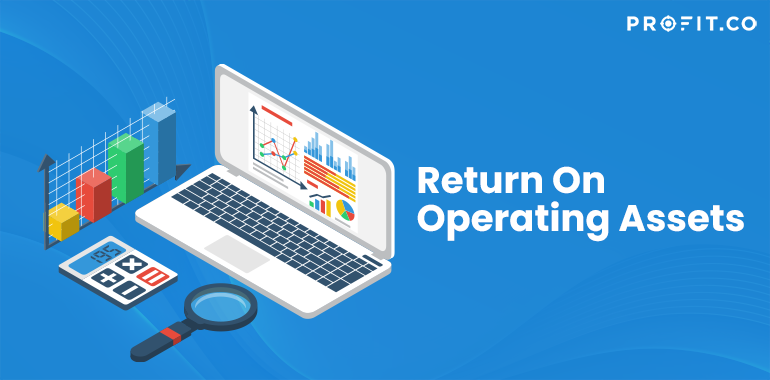A company needs a fair number of operating assets in order to continue functioning. This is practically what keeps the company going. The return on operating assets (ROOA) turns that in a percentage – in other words, it calculates how much a company earns by investing in that operating asset.
But what is, precisely, this formula – and how do we apply it? By gaining further knowledge, of course – and you start here.
Defining the Return On Operating Assets
The return of operating assets measures a company’s ability to generate profit from the operational assets’ income. In other words, it shows how profitable your company is by only using your day to day resources. Some operating assets examples are account receivables, cash, inventories, and fixed assets.The assets responsible for producing revenue have to perform business functions; however, the return provided by these assets will tell the manager precisely how valuable they are. Depending on their performance, they may either be removed or replaced.
For example, if you have an expensive piece of equipment that comes with high monthly costs – but no actual increase in revenue – then it might be a sign that you have to change it. It can be a less expensive unit that can perform the same job – or maybe even a better one.
Once a company starts focusing on the operating assets, they will have even more control over the costs – and they may boost the income simply by improving the process.
Understanding the Formula
The formula for calculating the return on operating assets is also fairly simple. All you have to do is take the net income and divide it by the operating assets. As a result, the formula will look exactly like this.
Each of these values is fairly easy to come across. First things first, you will have to look for the net income on the income statement of the company. Further on, you have to locate the operating assets; those can be found on the balance sheet. Bear in mind that you only have to add the operating assets here – and disregard the non-operative ones.
Once you have both values and you divide the assets by the income, you will receive a percentage of your return. The higher the percentage, the more profitable your business will be.
Final Thoughts and Cautions
Bear in mind that the ROOA can change over time, depending on the income and the company. What worked for you this year might not work the same the next year – which is why you might evaluate the ROOA fairly often. One or two times per year would be enough to get an idea of every aspect’s profitability.
If the percentage becomes lower than before, then it might be time for you to make some changes. For example, if an asset barely brings any profit (or none at all) you may want to change it. Regardless if you go for a less expensive model or one that brings more profit, it’s still a “win” for the company.
